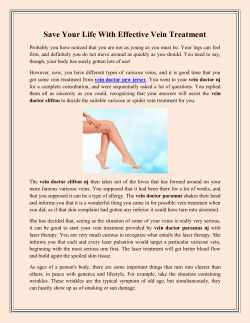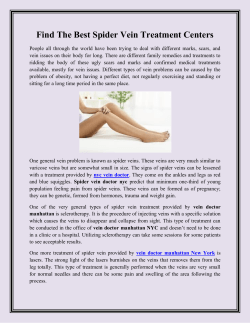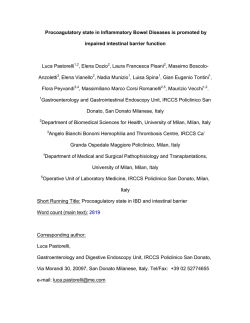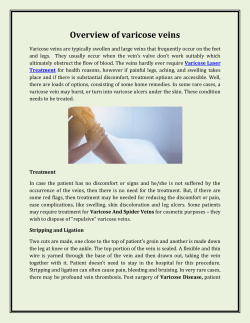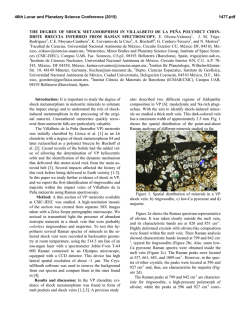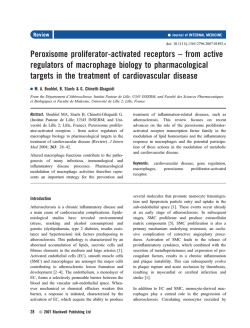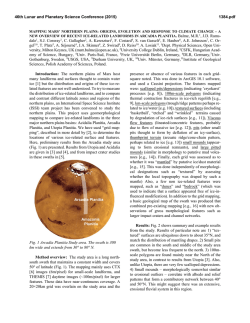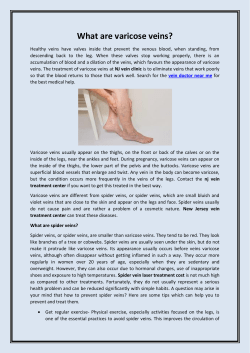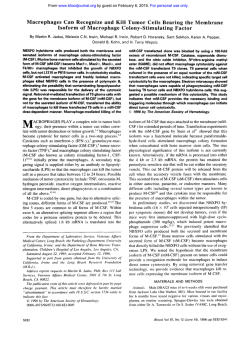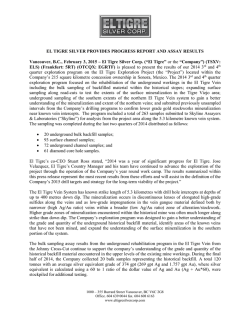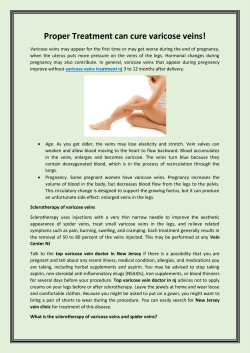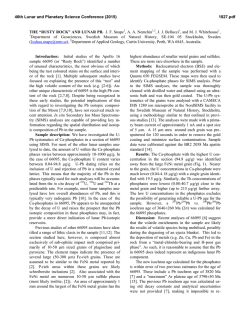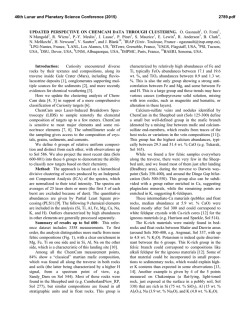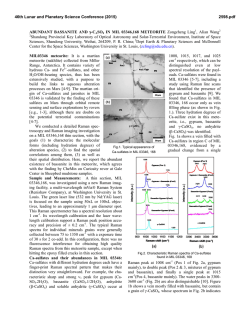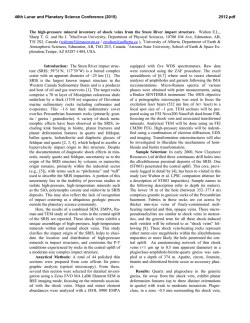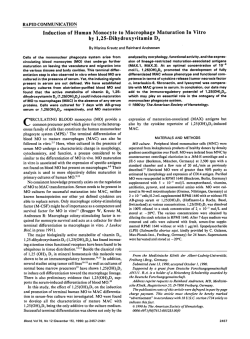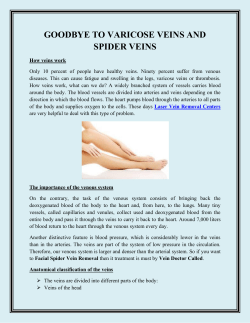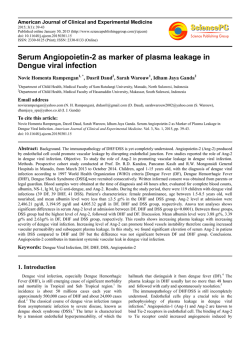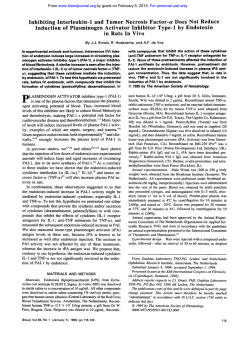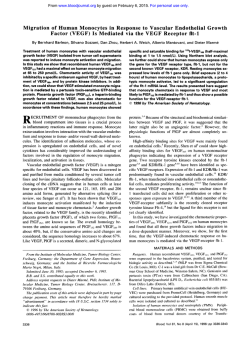
1-s2.0-S1072751514009077-main
S154 Surgical Forum Abstracts 2117Æ1080 mL occurred during HD. Mean GSV diameter was 3.0Æ1.3 mm pre-dialysis vs 2.5Æ1.2 mm post-dialysis (p¼0.001). Using a 2.5 mm criterion for suitability, GSV diameters in 3 patients (9.7%) were adequate pre-HD but inadequate post-HD. No individual variables predictive of diameter change were identified. No significant changes in arm vein diameters were identified. CONCLUSIONS: Post-HD decreases in GSV diameter may result in incorrect assessment of vein as inadequate, particularly when vein mapping is performed on the same day. Timing of HD should be considered when borderline vein diameters are identified. Further studies are required to evaluate associations between volume status and vein diameters in other populations. Fabrication of Durable, Perfusable Microvessels within Tissue-Engineered Constructs Rachel Campbell Hooper, MD, Adam Jacoby, BA, Ope A Asanbe, MD, Hector L Osoria, BS, Tarek Elshazly, Jason A Spector, MD, FACS Weill Cornell Medical College, New York, NY INTRODUCTION: The fabrication of tissue-engineered constructs with an inherent vascular system remains challenging. Further, an intact, healthy endothelial surface remains critical for thrombosisfree blood flow. Here we synthesize tissue-engineered endothelialized microvessels within collagen hydrogels, sustainable for up to 28 days in culture and suitable for perfusion. METHODS: U-shaped pluronic F127 fibers were sacrificed in type I collagen, creating a central microchannel, 1.5 mm in diameter. After fiber sacrifice, 5 x106 cells/mL human aortic smooth muscle cells (HASMC) and 5 Â 106 cells/mL human umbilical vein endothelial cells (HUVEC) were sequentially seeded into the microchannel 24 hours apart. After 7, 14, and 28 days of culture, constructs were fixed and processed for histology. RESULTS: Microchannels were successfully seeded with HUVEC/ HASMC. Hematoxlyin and eosin staining demonstrated a confluent lining by 7 days of culture, which was thickened at 14 days and maintained at the 28-day time point. Immunohistochemical analysis revealed the formation of a neointima and neomedia comprised of CD31 expressing endothelial cells and -SMA expressing smooth muscle cells respectively. In addition after 7 and 14 days we noted deposition of critical extracellular matrix proteins basal lamia collagen IV and fibronectin. CONCLUSIONS: We have successfully fabricated tissue-engineered constructs with microchannels that support engraftment and proliferation of smooth muscle and endothelial cells forming a durable vascular network. Such constructs recapitulate the organization of vascular cells within blood vessels found in vivo, providing a surface for thrombosis-free blood flow after in vivo anastomosis. J Am Coll Surg Inhaled Carbon Monoxide Induces a Phenotypic Shift In Macrophages Andrew E Leake, MD, Guiying Hong, Kent R Zettel, MD, Mostafa H Ramadan, MBCHB, Edith Tzeng, MD, FACS University of Pittsburgh Medical Center, Pittsburgh, PA INTRODUCTION: Inhaled carbon monoxide (CO) has potent vasoprotective actions in vivo but its mechanisms of action remain unknown. We have previously shown that peritoneal macrophages isolated from CO treated animals secrete pro-endothelial and angiogenic factors that cannot be reproduced by direct CO treatment. We hypothesize that inhaled CO mediates phenotypic shifts in the macrophages to favor vasoprotective functions. METHODS: Peritoneal macrophages were collected from rats after inhaled CO (250 PPM for 1 hr) or from an air control rat. The cells were cultured overnight and stimulated with and without LPS. Levels of TNFa, IL6 and IL10 in the media were quantified with ELISA and nitric oxide (NO) with the Griess assay. Mouse peritoneal macrophages were similarly collected for flow cytometry to determine CO effect on M1 (proinflammatory, CD86) and M2 (anti-inflammatory, CD206) phenotypes in CD11b macrophages. RESULTS: Macrophages from CO treated rats had similar baseline cytokine and NO production as cells from air treated rats. After LPS treatment, CO-macrophages exhibited increased NO, TNFa, and IL6 production vs air-macrophages. Similarly IL10 was increased in CO-macrophages. By flow cytometry there was no difference in phenotypic markers without stimulation. However, with LPS stimulation, CO-macrophages exhibited decreased M1 and increased M2 positive cells compared to LPS treated air macrophages. CONCLUSIONS: Inhaled CO does not alter baseline macrophage phenotype, but with inflammatory stimulus, it induces a shift toward a mixed inflammatory/anti-inflammatory phenotype. The duration and dynamic nature of these changes will be examined in future studies. Upregulation of Toll-Like Receptor 2 (TLR2) on Endothelial Cells (EC) is Dependent on Extracellular Matrix (ECM) Composition and Integrin Engagement Jia Xu, PhD, Kelly Benabou, BA, Jun Xu, MD, Xiangdong Cui, MD, Ulka Sachdev, MD, FACS University of Pittsburgh Medical Center, Pittsburgh, PA INTRODUCTION: We have demonstrated that TLR2 may be important in angiogenesis after limb ischemia. While expression of TLR2 on ECs grown on gelatin is very low at baseline, upregulation is TLR4-dependent. However, knockdown (KD) of TLR2 inhibits tube formation in laminin-rich Matrigel while KD of TLR4 does not. We hypothesize that differences in TLR2 expression is ECM-specific, possibly through integrin-mediated mechanisms. METHODS: EC were plated on gelatin, laminin or Matrigel and tested for TLR2 expression at 2, 4 and 6 hours using PCR. EC
© Copyright 2024
